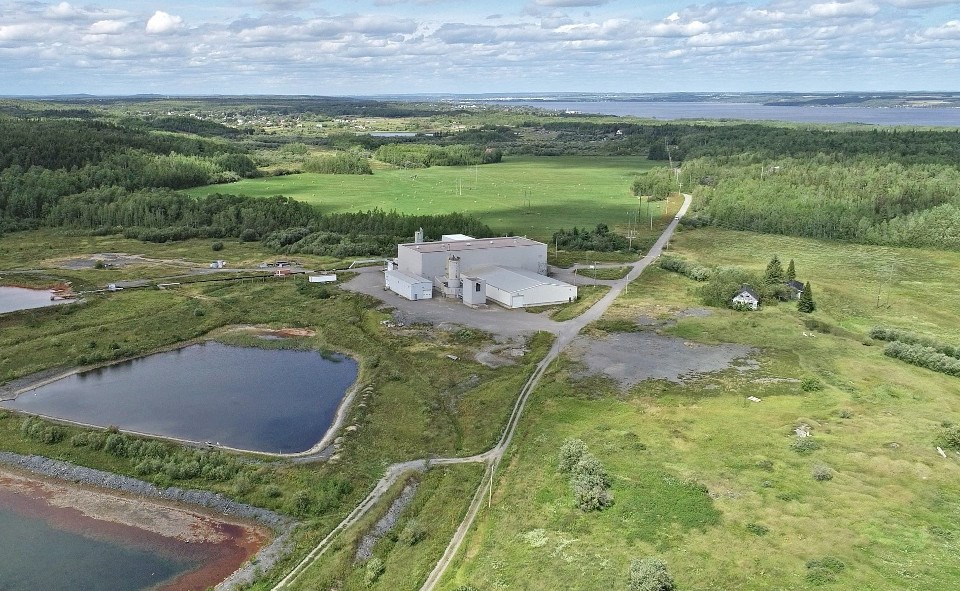When First Cobalt acquired the Yukon Refinery in 2017, Trent Mell and his crew weren’t really sure what they had picked up.
The Toronto-based junior miner was part of a staking rush three years ago around the historic silver mining town of Cobalt.
The grey metal, once regarded as a waste byproduct during the area’s silver rush of the early 1900s, was in demand as a critical ingredient in the burgeoning electrical vehicle battery market.
The shuttered refinery was included in a three-way merger deal as First Cobalt sought to consolidate 100 square kilometres of exploration properties in northeastern Ontario.
“When we did the deal, people were looking for pounds in the ground,” said Mell, the company’s president and CEO.
“As a non-cash flowing junior, you look at it and say, what am I getting myself into?”
It's been a serendipitous journey for First Cobalt through boom, bust and a resilient cobalt market over the last three years.
Mell anticipates an exciting year in 2020 as he awaits the results of a feasibility study, due out in early April, on the estimated costs of a refinery restart that could happen as early as this November.
Built in 1996 and located on the outskirts of town, the refinery was mothballed in 2015 when its Swiss owners ran out of money.
The hydrometallurgical facility had operated in starts and stops, processing small batches of difficult-to-process feeds on very limited runs.
One train of thought within the company was they had inherited a potential liability with the buildings and a tailings impoundment area.
“We took it on, not really knowing at the outset how we were going to monetize that over the short term,” said Mell.
When cobalt prices started to crash in early 2018 and exploration financing dried up, the company took a second look at the plant they picked up, almost as an afterthought.
Upon further examination, they discovered they possessed the only permitted cobalt extraction refinery in North America.
Want to read more stories about business in the North? Subscribe to our newsletter.
Their strategy now is to position the refinery as an international toll-processing operation.
The revenue generated will be funneled back into their exploration properties in Idaho and northeastern Ontario, none of which are advanced enough to provide feedstock for the plant.
The almost turnkey plant would receive cobalt hydroxide from around the world to process it into cobalt sulfate, used for the cathode part of lithium-ion batteries.
The Democratic Republic of Congo produces 60 per cent of the world’s cobalt supply. China dominates the cobalt processing coming out of the African country.
First Cobalt’s plan is to siphon off a small percentage of that processing business.
Mell indicates there is interest from major mining companies looking for processing alternatives outside of Asia.
First up to bat has been Glencore AG.
Last summer, the multinational base metal miner advanced First Cobalt US$5 million to do the restart study.
The two parties are currently negotiating a commercial supply agreement with Glencore for a proposed four-and-half-year period.
“The cobalt hydroxide feed they make in the Congo is perfect for our refinery,” said Mell.
Under a quick startup scenario, the refinery could be running as a modest 12-tonne-per-day operation by November.
With a permit amendment, that could be scaled up to a larger 55-tonne-per-day operation by the end of 2021. Glencore has promised a further US$40 million to expand the operation.
“Glencore wants 100 per cent of the capacity they’re going to finance,” said Mell.
“The first few years, I want to keep this as simple as possible,” in having a steady source of feed from one supplier.
But long term, he envisions feed coming in from Ontario and U.S. clients, and possibly through battery recycling.
In terms of employment opportunities, Mell was reluctant to talk about a specific number of plant jobs until the findings in the feasibility study can be digested.
Off-hand, he suspects it shouldn’t more than 30 positions, with double that number on the service and supply side – still not an insignificant number for the Temiskaming region.
Logistically, Mell expects the volume of Glencore material arriving at the plant from overseas shouldn’t be more than a couple of trucks daily.
“This is pretty high-grade material.”
On the exploration front, Mell said their Iron Creek Project in Idaho – a rare primary cobalt deposit – will be getting most of their attention.
“Every hole hits (cobalt). It’s a five-million (ounce) resource on the way to 10 (million).
But Mell said they haven’t given up on Ontario.
He calls the prospective 11,700 hectares under the company’s control “fascinating.”
Their ground once hosted 50 silver mines, flush with remaining cobalt resources.
The bulk of their claims between the town of Cobalt and the former town of Silver Centre saw very little mining activity in that part of the camp, and not much in the way of modern exploration techniques were applied.
Once cash starts flowing from processing, Mell would like to resume exploration drilling there.
Before halting work, the company had 30 to 40 people drilling, conducting geophysical work, and compiling more than 100 years’ worth of data and mining information.
“We now sit with the best, most modern inventory of geological information in the Cobalt camp, with really spectacular drill results.”
Mell said one undisclosed battery manufacturer is willing to work with them to ensure their refined material meets their specifications.
Though aware of the potential risks ahead to stay on budget and the usual hiccups in recommissioning a plant, Mell admitted, “I’m having more fun than I’ve had in a few years.
“I wouldn’t say it’s daunting, but it’s an exciting year ahead. I’m mindful of the potential pitfalls and the magnitude of change we’re trying to implement.
"But I’ve got a really good, experienced team and we’ve spent a lot of time identifying what the risks are and planning for them.”




